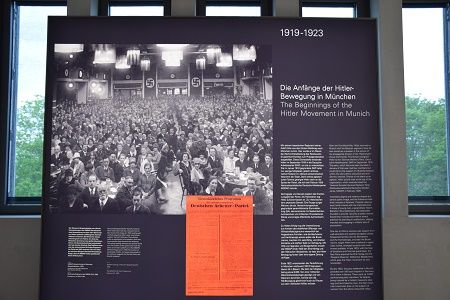The Best of Munich and Bavaria, Part 1
Munich is one of Germany's most livable cities. It's pretty great to visit, too.

World-class museums, gardens, bike paths, and pedestrian squares and are just some of the reasons why Germans rate Munich as one of the nation’s most livable cities. Another of Munich’s charms: location. As the capital of Bavaria, Munich puts you within easy drives of Bavaria’s lakes, mountains, and forests.
Munich’s Museums
Residenz Muzeum (Residence Museum)
The Wittelsbachs, Bavaria’s rulers for centuries, erected castles that befit their station. The Residenz Museum, a complex of buildings, is itself a work of art that
represents both princely ambition and period taste from the 17th to the 19th centuries. Adorned with elaborate gilding, intricate murals, and fine tapestries, the center features sculptures, furnishings, paintings, and other art. The Antiquarium, constructed from 1568 to 1571 to house Duke Albrecht V’s antique sculptures, is the residence’s oldest room and one of the most lavish and large Renaissance halls north of the Alps. The room impresses with its barrel-vaulted ceiling and lunettes painted with scenes of Bavaria.
The galleries also showcase items collected and commissioned by the rulers. Far Eastern collection, rooms 15 to 20, exhibits porcelain plates and bowls, some dating to the Ming dynasty of 1600, and the silver collection, rooms 100 to 103, presents lavishly embossed pieces as well as 502-piece silver and gilt service produced by Paris goldsmiths from 1807 to 1809.

BMW Welt. Photo: Candyce H. Stapen
BMW Welt (BMW World)
To car enthusiasts, BMW Welt is much more than a museum. It’s an experience, a chance to pay homage to excellent engineering. Enter the futuristic-looking glass and steel building to explore 100 years of the noted Bavarian Motor Works. Enthusiasts pose with both classic BMW motorbikes and cars (many employ selfie sticks to get that all-important photo) and get behind the wheel of the company’s newest vehicles. What makes this more than a showroom experience are the variety of vehicles, the engineering exhibits, and the games consoles—great for kids—that allow you to “drive” and maneuver at top speed.
At the museum’s Junior Campus, ages 5 to 13 explore mobility and sustainability through hands-on exhibits. BMW offers a Young People’s Tour targeted to ages 14 to 18, encourages the next generation of drivers to sit in convertibles and straddle a motorcycle. A special adult tour leads you through the BMW trifecta—the museum, the plant and the car delivery part of the Welt. Reserve these tours well in advance.

NS-Dokumentationszentrum. Photo: Candyce H. Stapen
NS-Dokumentationszentrum (Munich Documentation Center for the History of National Socialism)
This boxy building near Munich’s Königsplatz represents an aspect of the new Munich, and maybe the new Germany. The National Socialist (Nazi) Party began in Munich and the Documentation Center traces the rise of both the party and Hitler’s agenda, putting the lie to the once-frequently heard lament “We did not know what was happening.”
To show that Munich’s citizens and other Germans did know about the persecution of the Jews, the facility uses a combination of real photos and texts, often from newspapers, that detailed the events to the German public. Thirty-three main, vertical panels pinpoint themes through a combination of photos and text (English and German.) Horizontal light boxes present more details. Photos show Storm Battalion men preventing customers from entering Jewish business; Munich’s citizens walking past the smashed windows of the Uhlfelder department store, whose Jewish owner and son were sent to Dachau; SS officers hanging a man; trains bringing prisoners to concentration camps and more.
On the last exhibit floor, a touch screen and news ticker report current instances of the exclusion of minorities—just in case you thought persecution lived only in the past. While focusing on the incontrovertible past, the Centre’s purpose is to showcase democracy’s fragility and to underscore that without upholding the rights of minorities, oppression and atrocities can happen again.
Have you visited Munich? Which parts of the city were your favorite? Share your thoughts on Twitter, @familyitrips.
ACTIVA BioACTIVE Bulk Flow Marks Pulpdent’s First Major Product Release in 4 Years
December 12th 2024Next-generation bulk-fill dental restorative raises the standard of care for bulk-fill procedures by providing natural remineralization support, while also overcoming current bulk-fill limitations.